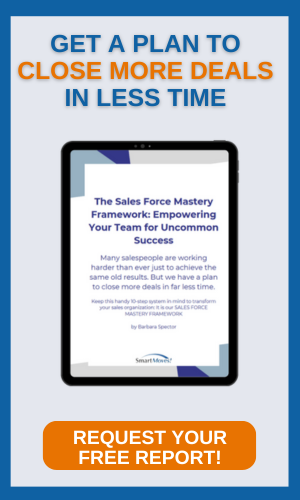
By Marc Wayshak
I was recently at Nordstrom with a close friend of mine when she held up two pairs of high-heeled shoes. Both pairs were black, appeared similar and looked pretty to me. “What do you think each pair of shoes costs?” she asked.
“Well, this is a nice place, so I’m guessing that they both cost about $150,” I replied.
She smiled at me as if she were watching a puppy hopelessly barking at the moon. “Actually, this pair,” she said, holding up the shoes in her left hand, “costs $110.”
“I was close!” I said defensively.
But then she continued. “Now this pair,” she said, holding up the shoes in her right hand, “costs $650.”
“What?!?!? But they look so similar!” I exclaimed in surprise.
Upon further reflection, I began to see the parallels that women’s shoes have with selling on price versus value: Products or services that are fundamentally the same can sell for drastically different prices. It all depends on the way they’re sold.
Let me introduce you to two salespeople: Don and Liz. Both have been selling bathroom accessories for 20 years. However, they each sell in a completely different way.
Don is all about price. He’ll walk into a prospect’s office and say, “I see that you’re working with Grohe, and I can show you how you can save 50 percent by working with me instead...”
Liz, on the other hand, is all about selling on value. She’ll walk into a prospect’s office and begin a conversation by saying, “I really appreciate your inviting me in today. I want to tell you up front that if you are looking for the lowest prices, I’m not your gal. My goal is to help my clients create a bathroom that ‘wows’ visitors. Does it make sense for us to continue talking?”
Both approaches lead to sales, but the difference in the average transaction size and profitability is night and day. Liz wins, and she wins big.
If you’re determined to sell on price like Don, then you should stop reading this now. However, if you’re open to selling on value like Liz, then stay with me...
Here are four ways to stop selling on price:
1. Stop being a vendor: Don is a vendor to his customers, while Liz is a strategic partnerto her clients. Get away from just being another vendor offering the best price. Instead, focus on how you can help provide massive value to your clients. The prospects that just want the best price are not who you want to work with. At least 60% of prospects want something more than just the best price. Target those folks.
2. Be distinct: Both of the shoes my friend showed me appeared to be similar, but one had a very distinct brand, while the other was essentially no-named. You don’t need advertising to be distinct — your approach to selling can be what makes you stand out. While Don’s approach was pretty cheesy and predictable, Liz was bold and totally distinct from what the prospect typically experiences. Immediately, the prospect is intrigued to understand more about why Liz isn’t the cheapest. Everyone knows that they get what they pay for, so let them experience the best.
3. Create value in your conversation: Every qualified prospect has challenges that you can solve. For example, in the case of Liz, her qualified prospect might be a developer that has used cheap bathroom accessories in the past only to find that they frequently break and need to be replaced after only a year. By learning about the prospect’s experience and how much that cost him in lost revenues, Liz is creating tremendous value for her products — before she ever even shows him her product line.
4. Pile it on: Good prospects are willing to pay more when they believe they are getting tremendous value. That means that, in order to create that value, you must think in terms of selling solutions and packages. For example, Liz not only sells bathroom accessories, but she also offers custom design and assistance with actually installing the accessories in order to ensure that they last for many years. This perceived added value allows her to charge a higher price than Don could ever imagine charging. How can you add additional products or services to your offering to increase the perceived value of your product or service?
Selling on price is never the only option for a company. By following these four steps and thinking creatively about how to increase your value in the eyes of the client, your sale size will increase dramatically.





